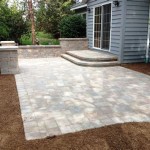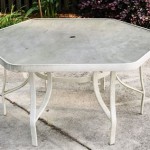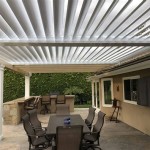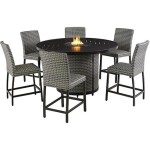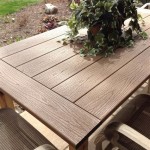Concrete Patio Shapes: Design Ideas for Outdoor Living
Concrete patios offer a versatile and durable foundation for outdoor living spaces. The design possibilities are extensive, limited primarily by budget, available space, and aesthetic preferences. Choosing the right shape is a critical step in creating a patio that complements a home's architecture and fulfills the intended function of the outdoor area. This article will explore various concrete patio shapes, providing insights into their characteristics and potential applications.
Rectangle Patios: A Classic and Practical Choice
The rectangular patio is arguably the most common and straightforward shape. Its popularity stems from its inherent practicality and ease of construction. The straight lines and right angles facilitate efficient space utilization, making it well-suited for accommodating outdoor furniture, grilling equipment, and dining sets. Rectangular patios are particularly effective when aligned with the lines of a house, creating a cohesive and visually appealing extension of the indoor living space.
One of the advantages of a rectangular patio is its modularity. It can be easily expanded or subdivided to create distinct zones for different activities. For instance, a large rectangular patio could be divided into a dining area, a lounging area with comfortable seating, and a dedicated space for a grill or outdoor kitchen. The regularity of the shape also simplifies the process of laying concrete, reducing the likelihood of errors and minimizing material waste. Furthermore, rectangular patios are generally more cost-effective to build compared to more complex shapes, making them an attractive option for homeowners on a budget.
However, the simplicity of a rectangular patio can sometimes be perceived as lacking in visual interest. To mitigate this, creative design elements can be incorporated, such as stamped concrete patterns, colored concrete, or decorative borders. The addition of landscaping features, such as planters, trees, or flower beds, can further enhance the aesthetic appeal of a rectangular patio, softening the hard lines and creating a more inviting atmosphere. The orientation of the rectangle relative to the house and the surrounding landscape also plays a significant role in the overall impact of the design.
Ultimately, the appropriateness of a rectangular patio depends on the specific circumstances of the project. It is most effective when the existing architecture lends itself to straight lines and right angles. In situations where the desired function of the patio is primarily utilitarian, such as providing a simple surface for outdoor dining or entertaining, a rectangular shape is often the most practical and efficient solution.
Square Patios: Intimate and Defined Spaces
The square patio, a variation of the rectangle, offers a sense of intimacy and defined space. This shape is best suited for smaller outdoor areas or for creating distinct zones within a larger landscape. Square patios often evoke a feeling of balance and order, making them a good choice for homeowners who prefer a more formal or structured aesthetic. They are particularly effective when used as secondary spaces, such as a small seating area adjacent to a garden or a dedicated spot for a fire pit.
While the square shape is simple, it offers opportunities for creative design. Diagonal patterns in the concrete, such as stamped designs or exposed aggregate, can add visual interest and break up the monotony of the straight lines. The inclusion of a water feature, such as a small fountain or a birdbath, can further enhance the ambience of a square patio. The size of the square is crucial; too small, and it might feel cramped, while too large, and it might lose its sense of intimacy.
The placement of furniture on a square patio can also influence its perceived size and functionality. Using a round table and chairs, for example, can soften the hard edges of the square and create a more inviting atmosphere. Conversely, using square or rectangular furniture can reinforce the geometric nature of the space, creating a more formal and structured look. The key is to strike a balance between the shape of the patio and the furnishings, ensuring that they complement each other in terms of both aesthetics and functionality.
Compared to rectangular patios, square patios are often less conducive to accommodating large gatherings. Their limited area makes them better suited for smaller groups or for individuals who prefer a quiet and secluded outdoor space. However, when designed thoughtfully and integrated seamlessly into the surrounding landscape, a square patio can be a valuable asset to any home, providing a comfortable and aesthetically pleasing extension of the indoor living space.
Curved and Freeform Patios: Organic and Naturalistic Designs
Curved and freeform patios offer a departure from the rigid geometry of rectangles and squares, providing a more organic and naturalistic aesthetic. These shapes are well-suited for homeowners who prefer a less formal and more flowing design. Curved patios can seamlessly integrate with the surrounding landscape, blurring the lines between the built environment and the natural world. They are particularly effective when used in conjunction with winding pathways, natural stone features, and lush plantings.
The design of a curved or freeform patio requires careful consideration of the surrounding environment. The shape should be guided by the existing topography, vegetation, and architectural features. A well-designed curved patio will appear to be an integral part of the landscape, rather than an afterthought. This often involves using soft curves that mimic the natural contours of the land, rather than sharp angles or abrupt changes in direction.
Constructing a curved or freeform patio typically requires more skill and effort than building a rectangular or square patio. The irregular shape necessitates more precise measurements and careful cutting of concrete. It is also more difficult to estimate material quantities accurately, which can lead to material waste or the need for additional purchases. However, the aesthetic rewards can be significant, as a well-executed curved patio can add a unique and distinctive touch to any home.
The flexibility of curved and freeform patios allows for the creation of distinct zones within a single space. For example, a curved patio could incorporate a raised seating area, a sunken fire pit, or a meandering pathway that leads to different parts of the garden. The use of varying textures and colors of concrete can further enhance the visual interest of the design, creating a dynamic and engaging outdoor space.
While curved and freeform patios offer a high degree of aesthetic flexibility, they are not always the most practical choice for all situations. Their irregular shapes can sometimes make it difficult to arrange furniture efficiently, and they may not be well-suited for accommodating large gatherings. However, for homeowners who prioritize aesthetics and who are willing to invest the time and effort required to design and construct a curved patio, the results can be truly stunning.
Circular Patios: Focal Points and Intimate Gatherings
Circular patios create a natural focal point and are ideal for fostering intimate gatherings. Their inherent symmetry and enclosed nature promote conversation and a sense of community. Circular patios are particularly well-suited for use as fire pit areas, outdoor dining spaces, or small garden retreats. The shape naturally draws people together, creating a welcoming and convivial atmosphere.
The design of a circular patio requires careful consideration of its diameter. A patio that is too small will feel cramped, while a patio that is too large will lose its sense of intimacy. The ideal size will depend on the intended use of the space and the number of people it is intended to accommodate. A smaller circular patio might be perfect for a couple or a small family, while a larger circular patio might be better suited for entertaining larger groups.
The center of a circular patio often serves as a natural focal point. This could be a fire pit, a water feature, a sculpture, or even a large potted plant. The placement of furniture around the perimeter of the circle should be carefully considered to maximize comfort and functionality. Curved benches or seating arrangements can complement the shape of the patio, creating a harmonious and inviting space.
While circular patios offer a high degree of visual appeal, they can sometimes be challenging to integrate into the surrounding landscape. Their geometric shape can clash with the organic forms of nature, particularly if the surrounding landscape is predominantly composed of straight lines and right angles. To mitigate this, it is important to soften the edges of the circle with plantings and other landscaping features. The use of natural materials, such as stone or gravel, can also help to blend the patio into its surroundings.
Compared to other patio shapes, circular patios are often more difficult to construct. The curved edges require more precise cutting and shaping of concrete, and the overall design must be carefully planned to ensure that the finished product is structurally sound and aesthetically pleasing. However, for homeowners who are willing to invest the time and effort required to build a circular patio, the results can be truly rewarding, providing a unique and inviting outdoor space that is perfect for relaxation and entertainment.
Combination Shapes: Customizing Outdoor Spaces
Combining different shapes offers the greatest flexibility in creating a truly customized outdoor space. By strategically integrating various geometric forms, homeowners can design patios that perfectly meet their specific needs and aesthetic preferences. This approach allows for the creation of distinct zones within a single patio area, each with its own unique function and character.
One common combination is the integration of a rectangular patio with a circular or curved element. For example, a rectangular patio could be extended with a circular fire pit area or a curved seating nook. This approach allows for the efficient use of space while also adding visual interest and creating distinct zones for different activities. The rectangular portion of the patio could be used for dining or lounging, while the circular or curved element could be used for socializing or relaxation.
Another approach is to combine multiple rectangular or square patios at different levels. This technique can be used to create a terraced effect, adding depth and dimension to the outdoor space. The different levels can be used to define distinct zones, such as a dining area on one level and a lounging area on another. This approach is particularly effective on sloped properties, where it can be used to create a more usable and attractive outdoor space.
Designing a combination-shaped patio requires careful planning and consideration of the overall aesthetic. The different shapes should complement each other in terms of both form and function. The materials used for the different shapes should also be consistent to create a cohesive and unified design. It is important to consider the flow of traffic throughout the patio area, ensuring that the different zones are easily accessible and well-connected.
While combination shapes offer a high degree of design flexibility, they can also be more challenging to construct. The integration of different shapes requires more precise measurements and careful cutting of concrete. It is also important to ensure that the different shapes are properly connected and that the overall structure is sound and stable. However, for homeowners who are willing to invest the time and effort required to design and construct a combination-shaped patio, the results can be truly spectacular, providing a unique and personalized outdoor space that is perfectly tailored to their individual needs and preferences.

Concrete Patio Design Ideas And Cost Landscaping Network

20 Design Ideas For Your Concrete Patio

Backyard Stained And Stamped Concrete Patios

7 Concrete Patio Design Ideas To Enhance Your Home

Concrete Patio Ideas To Choose From For Your Compound Decorifusta Designs Design

130 Best Concrete Patio Designs Ideas Backyard Design

The Best Concrete Patio Ideas For Your Backyard

Selecting A Patio Shape Landscaping Network

Stamped Concrete Patio Design Ideas You Ll Love For Years To Come Degnan Build Remodel

Concrete Paver Patio Design With Pergola Plan Mypatiodesign Com


